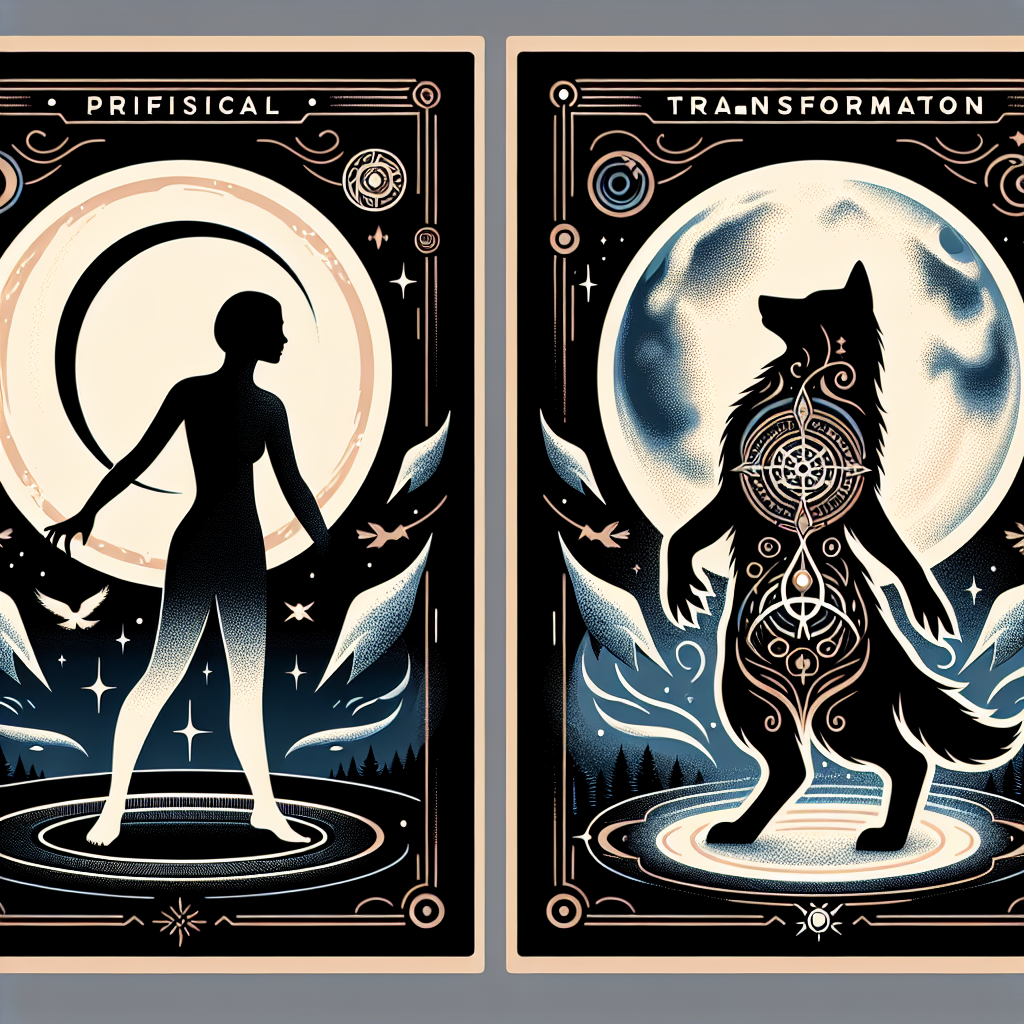The Writer's Guide to Crafting Authentic Werewolf Transformations: 7 Hidden Elements That Bring Your Shapeshifters to Life
Meta Description: Master the art of writing werewolf transformations with these 7 unexpected elements from mythology and folklore that will make your supernatural fiction stand out.
Think you've mastered the werewolf transformation in your writing? While full moons and Hollywood-style morphing scenes dominate popular culture, authentic werewolf lore contains far more nuanced and compelling transformation triggers that can revolutionize your supernatural storytelling.
Whether you're crafting urban fantasy, paranormal romance, or horror fiction, understanding the deeper mythological roots and unexpected aspects of lycanthropic transformation will help you create more authentic, engaging characters that readers won't forget.
Beyond the Full Moon: Alternative Transformation Triggers
Emotional Catalysts
Contrary to popular belief, many ancient legends describe werewolves who transform during moments of intense emotional stress. Rage, fear, heartbreak, or even overwhelming joy can trigger the change, making your characters' transformations deeply personal and unpredictable.
This psychological connection creates rich storytelling opportunities:
- Anger-induced shifts during heated arguments or betrayals
- Fear-triggered changes when protecting loved ones
- Grief-fueled transformations following devastating losses
Hereditary Control
Some werewolf bloodlines possess the ability to transform at will, passing down this control through generations. These shapeshifters aren't slaves to lunar cycles or emotions—they're masters of their dual nature, choosing when and how to embrace their wolf form.
Ritualistic Transformations
Ancient texts describe werewolves who required specific rituals, objects, or incantations to change forms. Consider incorporating:
- Sacred wolf pelts or magical belts
- Ceremonial locations or timing
- Bloodline-specific transformation phrases
The Physical Reality: What Really Happens During Transformation
1. The Cascade Effect
Real transformation begins subtly—a tingling sensation, elevated body temperature, or hypersensitive skin. These initial signs build gradually, creating tension and anticipation in your narrative.
Early Warning Signs:
- Burning sensation along the spine
- Heightened awareness of scents and sounds
- Involuntary muscle tremors
- Changes in vision clarity and color perception
2. Structural Metamorphosis
The reshaping process involves far more than simple size changes. Bone density increases, joint structures realign, and muscle fibers rebuild themselves to support an entirely different anatomy.
Key Physical Changes:
- Skeletal restructuring: Spine elongation, rib cage expansion
- Muscular adaptation: Core strength development, limb proportion shifts
- Sensory enhancement: Ear canal modifications, nasal cavity expansion
- Dental transformation: Canine elongation, jaw structure adjustment
3. The Pain Paradox
While transformation agony is common in modern fiction, ancient folklore often describes the process as transcendent rather than torturous. Some legends speak of euphoric release, spiritual awakening, or profound connection to natural forces.
Psychological Dimensions: The Mental Transformation
4. Consciousness Continuity
One of the most fascinating aspects of werewolf lore involves the question of awareness. Does the human mind remain intact, or does primal instinct take over completely?
Three Primary Models:
- Complete displacement: Human consciousness disappears entirely
- Dual awareness: Both human and wolf minds coexist, often in conflict
- Enhanced humanity: Human intelligence combined with wolf instincts
5. Memory Fragments
The relationship between human and wolf memories varies dramatically across different mythological traditions. Some werewolves retain crystal-clear recollections, while others experience complete amnesia or fragmented dream-like sequences.
Gender-Specific Transformation Elements
6. Feminine Werewolf Characteristics
Female werewolves in traditional folklore often display different transformation patterns than their male counterparts:
Unique Aspects:
- Lunar synchronization: Connections to menstrual cycles and feminine moon worship
- Pack dynamics: Different hierarchical roles and territorial behaviors
- Maternal instincts: Enhanced protective capabilities, especially regarding offspring
- Social integration: Greater ability to maintain human relationships post-transformation
Cultural Variations: Ancient Wisdom for Modern Writers
7. Global Perspectives
Werewolf transformation concepts vary dramatically across cultures, offering rich inspiration for contemporary fiction:
Greek Traditions:
- Divine punishment transformations (Lycaon myth)
- Temporary wolf-form adoption for specific purposes
- Transformation as spiritual test or trial
Norse Heritage:
- Úlfhéðnar warrior transformations for battle enhancement
- Wolf-spirit channeling through sacred pelts
- Voluntary adoption of wolf characteristics
Native American Concepts:
- Skinwalker traditions involving malevolent transformation magic
- Protective wolf-spirit guides who can assume human form
- Ceremonial shapeshifting for spiritual purposes
Medieval European Folklore:
- Curse-based transformations requiring specific breaking conditions
- Magical object dependencies (belts, amulets, potions)
- Community-based werewolf identification and treatment methods
Practical Application for Writers
When crafting your werewolf transformations, consider these authentic elements:
- Choose meaningful triggers that connect to your character's emotional journey
- Develop unique physical symptoms that reflect your world's magical system
- Establish clear consciousness rules for consistency throughout your narrative
- Research cultural backgrounds that align with your story's setting
- Balance pain and pleasure in the transformation experience
- Create distinctive gender presentations if relevant to your plot
- Design memorable recovery processes that show transformation consequences
Conclusion
Authentic werewolf transformations go far beyond Hollywood stereotypes. By incorporating these seven unexpected elements—alternative triggers, detailed physicality, psychological complexity, gender variations, and cultural authenticity—you'll create shapeshifter characters that feel both mythologically grounded and refreshingly original.
Remember, the most compelling werewolf transformations serve your story's emotional core. Whether your characters embrace their dual nature or struggle against it, these authentic details will help readers connect with the profound experience of becoming something entirely new while remaining fundamentally themselves.
The next time you write a transformation scene, ask yourself: What deeper meaning does this change represent for my character? The answer might just transform your entire story.
💝 Ready to Explore More Romance?
If you enjoyed this article about Werewolf writing, discover thousands of captivating love stories on our platform.
Download App







